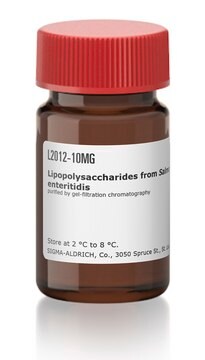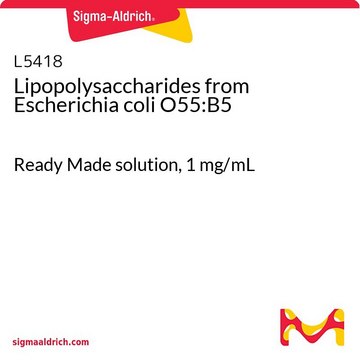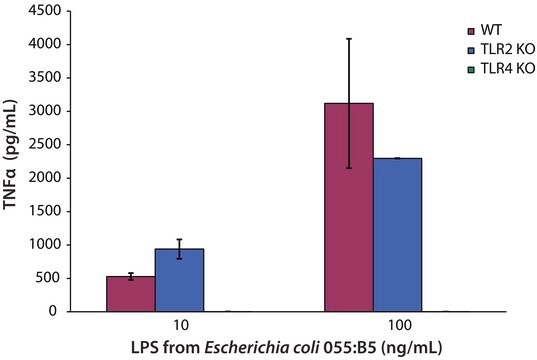L1887
Lipopolysaccharides from Salmonella enterica serotype abortus equi
purified by gel-filtration chromatography
Sinônimo(s):
LPS
About This Item
Produtos recomendados
fonte biológica
Salmonella enterica (Serotype abortus equi)
Formulário
lyophilized powder
purificado por
gel-filtration chromatography
Impurezas
<1% Protein
Condições de expedição
ambient
temperatura de armazenamento
2-8°C
Procurando produtos similares? Visita Guia de comparação de produtos
Descrição geral
Aplicação
Ações bioquímicas/fisiológicas
Nota de preparo
Sigma typically tests the solubility of FITC dextrans in water at concentrations at or above 25 mg/ml. Solutions should be protected from light. In vivo, FITC-dextran is stable for more than 24 hours.
Outras notas
Palavra indicadora
Danger
Frases de perigo
Declarações de precaução
Classificações de perigo
Acute Tox. 2 Oral
Código de classe de armazenamento
6.1A - Combustible acute toxic Cat. 1 and 2 / very toxic hazardous materials
Classe de risco de água (WGK)
WGK 3
Ponto de fulgor (°F)
Not applicable
Ponto de fulgor (°C)
Not applicable
Escolha uma das versões mais recentes:
Já possui este produto?
Encontre a documentação dos produtos que você adquiriu recentemente na biblioteca de documentos.
Os clientes também visualizaram
Conteúdo relacionado
Lipopolysaccharide (LPS) is the major component of the outer membrane of Gram-negative bacteria. Lipopolysaccharide is localized in the outer layer of the membrane and is, in noncapsulated strains, exposed on the cell surface.
Nossa equipe de cientistas tem experiência em todas as áreas de pesquisa, incluindo Life Sciences, ciência de materiais, síntese química, cromatografia, química analítica e muitas outras.
Entre em contato com a assistência técnica




